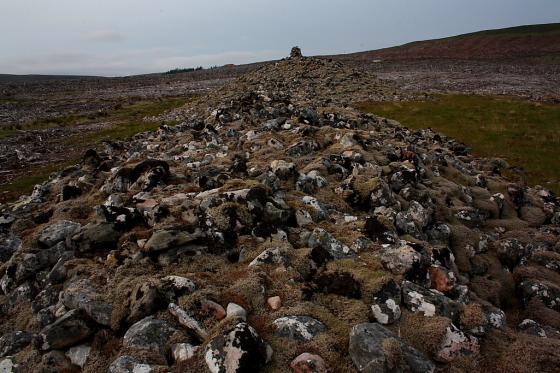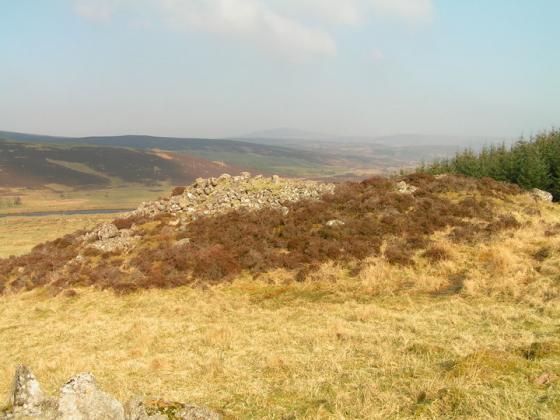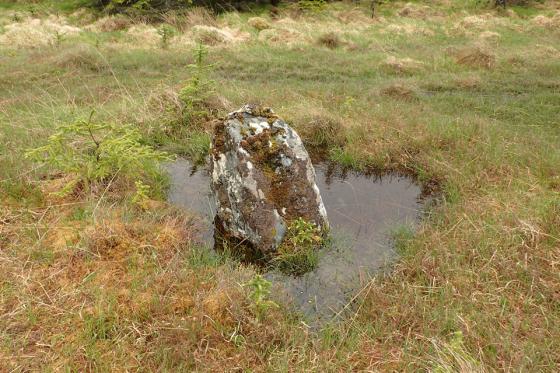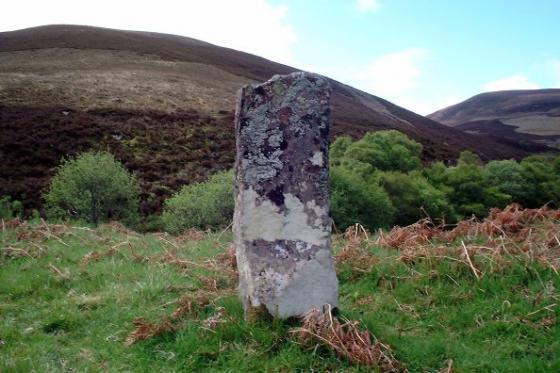The pair of chambered cairns gracing the south-western flank of Creag nan Caorach, the hill rising rather ‘sheepishly’ (assuming my limited gaelic is not even more so) to the east of the small hamlet of Kinbrace, are not among the largest monuments of the genre I’ve had the privilege of visiting over the past decade or so; nevertheless they form yet another vibrant entry in the wondrous canon of prehistoric cairns seemingly tasked by our forebears with escorting the River Helmsdale to the sea. Well, wouldn’t want the river spirits to get lost now, would we? Causes all sorts of problems. I imagine.
As mentioned... the chambered cairns do not crown the near-on 1,000ft summit of Creag nan Caorach, as might have been expected if collective, vainglorious self-aggrandisement had been the motive of their erectors. Oh no. Instead the monuments appear to have been carefully placed to observe the landscape... rather than be observed attempting to subjugate it. That is literally a much more classy outlook upon life and what it means to be human, don’t you think? Inherently so. To be fair it’s not that difficult to hypothesize what ‘event’ might have been the focus of attention here, the gaze of the visitor drawn to the south-west toward the confluence of the River Helmsdale with the Bannock Burn flowing down from the approx north; the perennial meeting and merging of waters.
Anyway, advancing uphill from the unfenced A897 a little south of Kinbrace (note that there is a railway station here should the train be your preferred mode of transport) the traveller must first negotiate a group of hut circles and an associated field system, the former presumably representing the residual footprints of the homes of the people who chose – or perhaps felt compelled – to bury their dead a little above and beyond to the east. So, onward and upward to these former homes of the ancestors of the ancestors, so to speak. All is quiet now upon the bare – dare I say inhospitable? – flank of Creag nan Caorach, where once upon a time voices, mingling with the coarser utterances of other animals, would’ve drifted on the breeze.... or remained inaudible upon the inevitable days of inclemency.
I dare say one such voice, albeit in much more recent times, was that of the ubiquitous A S Henshall who came to see and describe these cairns back in 1963. The western cairn [NC86903094], the best preserved of the pair, is an “Orkney-Cromarty type short, horned cairn with a Camster type chamber”.. rising about “4ft 6 inches above the heather.... It measures 43ft E-W by 46ft N-S and the horns project about 10ft”. The cairn is certainly chambered, part of which is exposed and is in my estimation a fine monument.
A little to the approx east stands its companion [at NC87073094]. Significantly robbed and overgrown with heather it “appears to have had a diameter of about 47ft. Three upright stones, two of them set at right angles, occur near the centre and suggest that the cairn has been chambered.” To be honest I’d go further than Audrey’s tentative notes and concur with the Ordnance Survey people who commented that these orthostats “leave little doubt that it is chambered, though no identifiable pattern is evident” [JM, 1977 and EGC, 1961].
There is more here, firstly in the form of another cairn set further to the approx south-east at NC87263056. Once again it is a substantial stone pile, according to the aforementioned OS people “...8.0m diameter by 0.7m high”. Unfortunately I could not discern any trace of a former chamber. The final monument of the quartet is a grassy cairn at NC86863099. I neglected to take an image of this, for whatever reason... however it apparently measures “15m by 14m by 1.3m high”, again with no visible chamber or cist.
So there you have it. Clearly Creag nan Caorach was deemed to be a very special place back in the day. Although, to keep things in context, it is in very good company with the fabulous (now deforested) Kinbrace Hill cairns a little to the south and the fine Carn Richard chambered cairn to the west. And that’s just for starters...
Eventually it is time to shift attention away from the prehistoric cairns adorning this windswept hill and focus upon the imperceptible abrasive action of water upon rock below. A vision of a landscape that is simultaneously impossibly ancient and absolutely contemporary. I find such a concept difficult to process so, as with the water, perhaps it is best to do as I do and let it just flow over you?








































